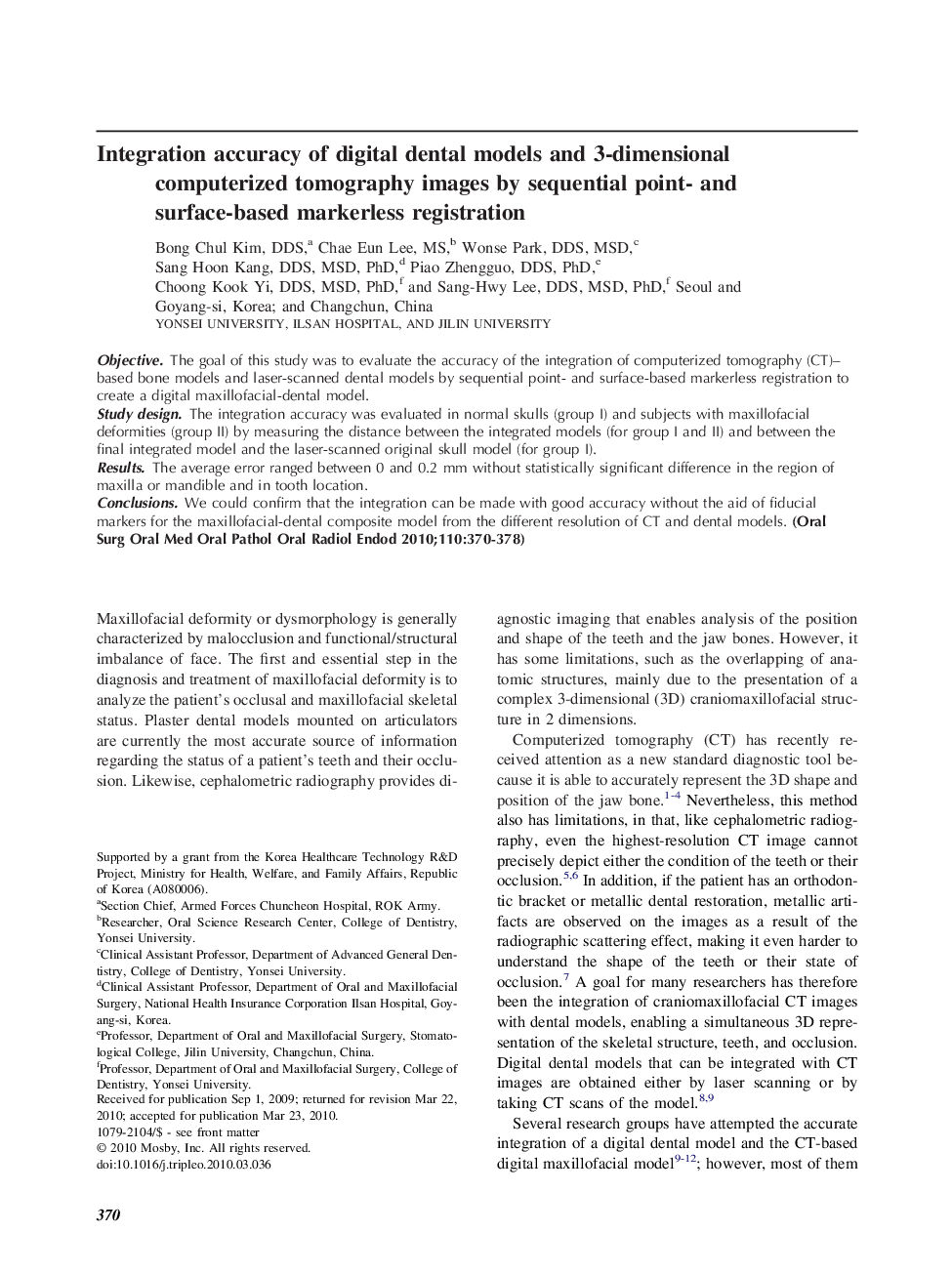| Article ID | Journal | Published Year | Pages | File Type |
|---|---|---|---|---|
| 3167428 | Oral Surgery, Oral Medicine, Oral Pathology, Oral Radiology, and Endodontology | 2010 | 9 Pages |
ObjectiveThe goal of this study was to evaluate the accuracy of the integration of computerized tomography (CT)–based bone models and laser-scanned dental models by sequential point- and surface-based markerless registration to create a digital maxillofacial-dental model.Study designThe integration accuracy was evaluated in normal skulls (group I) and subjects with maxillofacial deformities (group II) by measuring the distance between the integrated models (for group I and II) and between the final integrated model and the laser-scanned original skull model (for group I).ResultsThe average error ranged between 0 and 0.2 mm without statistically significant difference in the region of maxilla or mandible and in tooth location.ConclusionsWe could confirm that the integration can be made with good accuracy without the aid of fiducial markers for the maxillofacial-dental composite model from the different resolution of CT and dental models.
